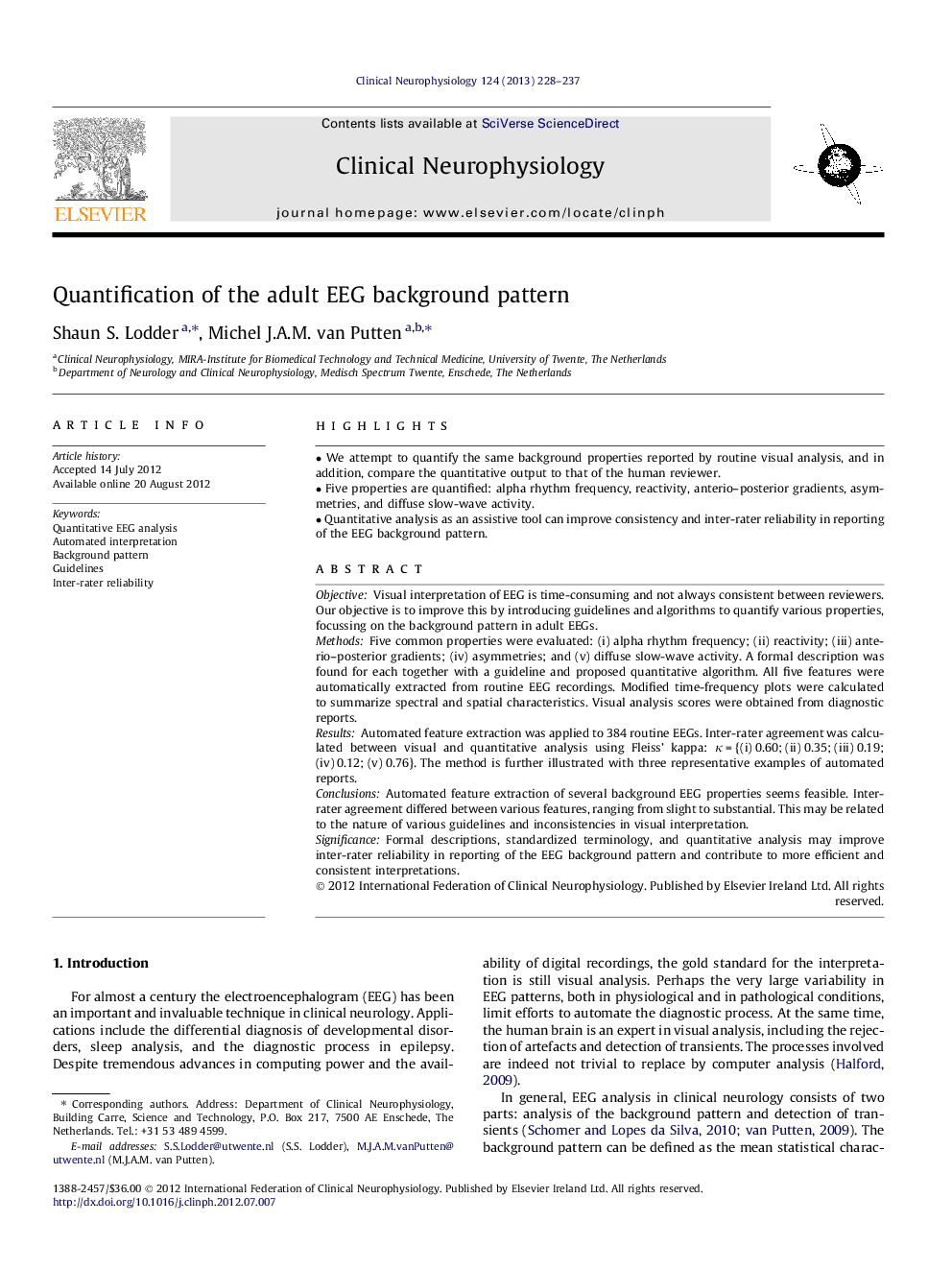| Article ID | Journal | Published Year | Pages | File Type |
|---|---|---|---|---|
| 3044604 | Clinical Neurophysiology | 2013 | 10 Pages |
ObjectiveVisual interpretation of EEG is time-consuming and not always consistent between reviewers. Our objective is to improve this by introducing guidelines and algorithms to quantify various properties, focussing on the background pattern in adult EEGs.MethodsFive common properties were evaluated: (i) alpha rhythm frequency; (ii) reactivity; (iii) anterio–posterior gradients; (iv) asymmetries; and (v) diffuse slow-wave activity. A formal description was found for each together with a guideline and proposed quantitative algorithm. All five features were automatically extracted from routine EEG recordings. Modified time-frequency plots were calculated to summarize spectral and spatial characteristics. Visual analysis scores were obtained from diagnostic reports.ResultsAutomated feature extraction was applied to 384 routine EEGs. Inter-rater agreement was calculated between visual and quantitative analysis using Fleiss’ kappa: κ = {(i) 0.60; (ii) 0.35; (iii) 0.19; (iv) 0.12; (v) 0.76}. The method is further illustrated with three representative examples of automated reports.ConclusionsAutomated feature extraction of several background EEG properties seems feasible. Inter-rater agreement differed between various features, ranging from slight to substantial. This may be related to the nature of various guidelines and inconsistencies in visual interpretation.SignificanceFormal descriptions, standardized terminology, and quantitative analysis may improve inter-rater reliability in reporting of the EEG background pattern and contribute to more efficient and consistent interpretations.
► We attempt to quantify the same background properties reported by routine visual analysis, and in addition, compare the quantitative output to that of the human reviewer. ► Five properties are quantified: alpha rhythm frequency, reactivity, anterio–posterior gradients, asymmetries, and diffuse slow-wave activity. ► Quantitative analysis as an assistive tool can improve consistency and inter-rater reliability in reporting of the EEG background pattern.
